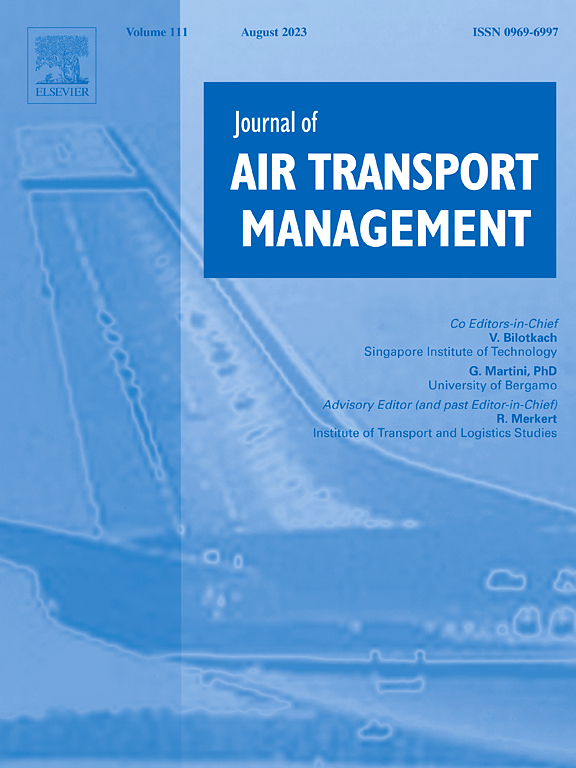济州岛国际机场天气、低层风切变与飞机复飞关系的研究
IF 3.6
2区 工程技术
Q2 TRANSPORTATION
引用次数: 0
摘要
风切变(WS)是指风速和/或风向的突然变化,无论是垂直方向还是水平方向。特别是低空风切变(low-level wind shear,以下简称LLWS)是一种发生在大约1600英尺(500米)或以下的WS,从而影响飞机在着陆或起飞阶段的操作。济州国际机场(CJU)因频繁发生LLWS和复飞(GA)操作(也称为误进)而闻名。众所周知,LLWS是难以捉摸的,因此难以预测。以往的大多数研究都是从气象角度来阐述LLWS,而没有考虑其对飞行操作的潜在影响。在本研究中,我们调查了导致CJU机场LLWS的天气条件,然后寻求LLWS与复飞之间的联系。一般天气资料和飞行记录,包括飞机速度、高度和特别天气观测。根据经验,我们将导致严重LLWS的五种风模式进行了分类,并需要进行复飞操作。在本文中,我们建立了一个概率表,根据风向和风速总结了复飞操作的机会。我们还讨论了局限性和未来研究的领域。本文章由计算机程序翻译,如有差异,请以英文原文为准。
An investigation of the relationship among weather, low-level wind shear and aircraft go-around at Jeju International Airport in Korea
Wind shear (WS) refers to an abrupt change in wind speed and/or direction, whether in a vertical or horizontal direction. In particular, low-level wind shear (hereafter LLWS) is a type of WS that occurs at or below an altitude of approximately 1600 ft (500 m) and thus affects aircraft operations during landing or take-off phases. Jeju International Airport (CJU) is well-known for experiencing frequent LLWS and consequent occurrence of go-around (GA) operations (also referred to as missed approach). LLWS is known to be elusive and thus difficult to predict. Most previous studies are concerned with elucidating LLWS from a meteorological angle, without considering its potential effects on flight operations. In this study, we investigate the weather conditions that lead to LLWS at CJU airport and then seek the linkage between LLWS and go-around operations. General weather information and flight records containing aircraft speed, altitude, and specific weather observations during GA at CJU airport are collected. We empirically categorize five wind patterns that contribute to severe LLWS and necessitate go-around operations. In this paper, we drive a probability table that summarizes the chances of go-around operations according to the wind direction and speed. We also discuss limitations and areas for future research.
求助全文
通过发布文献求助,成功后即可免费获取论文全文。
去求助
来源期刊

Journal of Air Transport Management
TRANSPORTATION-
CiteScore
12.40
自引率
11.70%
发文量
97
期刊介绍:
The Journal of Air Transport Management (JATM) sets out to address, through high quality research articles and authoritative commentary, the major economic, management and policy issues facing the air transport industry today. It offers practitioners and academics an international and dynamic forum for analysis and discussion of these issues, linking research and practice and stimulating interaction between the two. The refereed papers in the journal cover all the major sectors of the industry (airlines, airports, air traffic management) as well as related areas such as tourism management and logistics. Papers are blind reviewed, normally by two referees, chosen for their specialist knowledge. The journal provides independent, original and rigorous analysis in the areas of: • Policy, regulation and law • Strategy • Operations • Marketing • Economics and finance • Sustainability
 求助内容:
求助内容: 应助结果提醒方式:
应助结果提醒方式:


